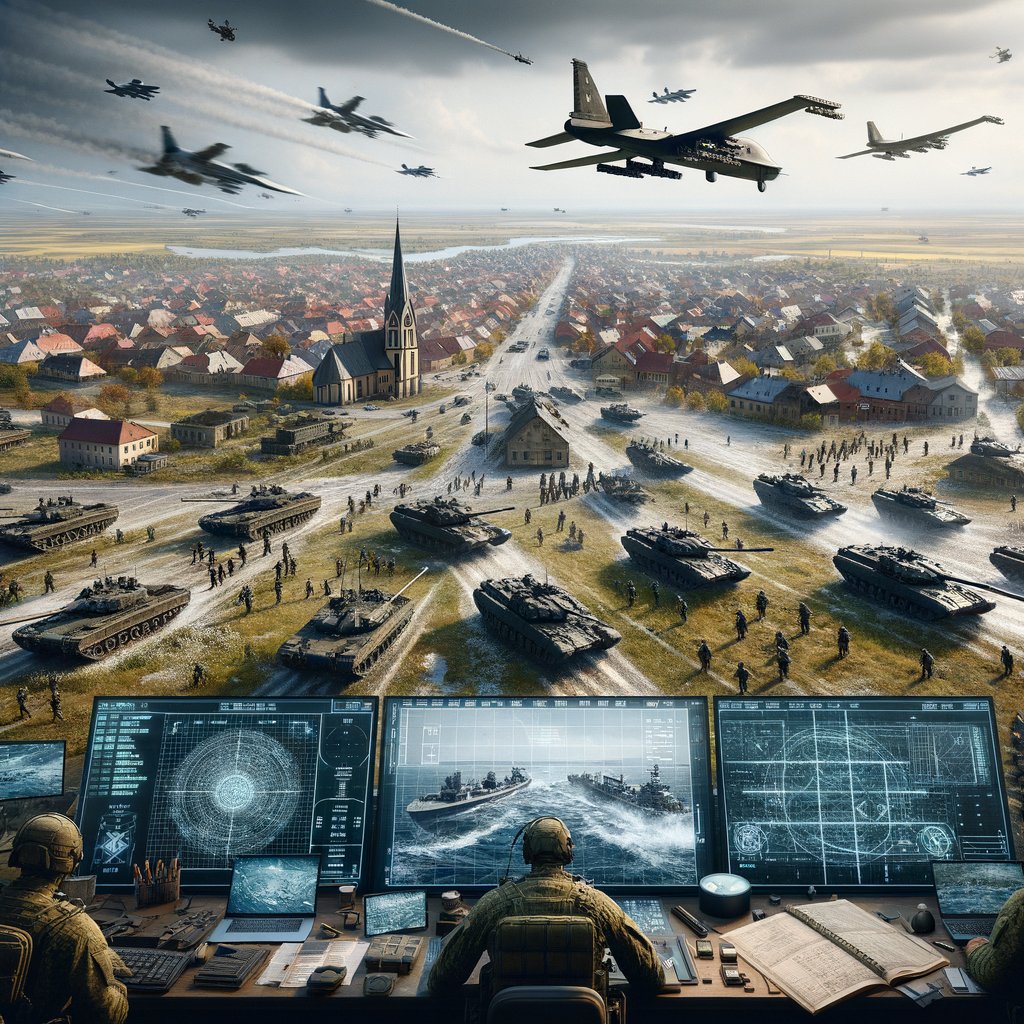Image created by AI
Intensified Military Operations in Donetsk: A Strategic Analysis of Russian Tactics and Ukrainian Response
The conflict in eastern Ukraine's Donetsk Oblast has seen a significant escalation as Russian military forces intensify their offensive operations, particularly around the strategic location of Pokrovsk. Following a recalibrated war strategy, Russian troops have widened their offensive, making tactical gains despite significant challenges and high casualty rates.
In a decisive shift in their military campaign, Russian forces, primarily the 90th Tank Division and the 15th Motorized Rifle Brigade, have executed a flanking maneuver south of Pokrovsk. The operation focused on encircling the town by capturing outlying settlements including Novotroitske and moving towards Shevchenko. This maneuver indicates a strategic preference to envelop rather than engage in direct assaults, which have proven costly in both manpower and materiel.
Concurrently, efforts in the Kurakhove and Velyka Novosilka sectors illustrate a similar pattern of envelopment, aiming to disrupt Ukrainian supply lines and force withdrawals without engaging in direct and potentially attritional urban warfare. The Russian command has redeployed key units, suggesting a prioritization of this sector, likely due to its geographical advantages and the potential to cut off Ukrainian forces.
Ukrainian military strategy has adeptly focused on leveraging technological advancements and tactical innovations to counter the Russian advances. Notably, Ukrainian forces have increased reliance on drone technology, not only for conventional surveillance and strikes but also employing naval drones to target Russian assets in the Black Sea, demonstrating an operational adaptability to Russian tactics.
In addition to tactical defenses, Ukraine has received a significant boost from international partners. The enhanced access to Starshield, an encrypted satellite network, has bolstered Ukrainian communication and coordination capabilities, which are crucial in managing and executing counter-offensives and in mitigating the effectiveness of Russian electronic warfare.
This ongoing conflict, while centered in the Donetsk region, is a reflection of broader strategic objectives and the dire human costs associated with prolonged military engagements. The Russian military has faced record-high casualty rates, with November 2024 alone witnessing over 45,000 troops wounded or killed according to the UK Ministry of Defense. Such figures highlight the unsustainable nature of the Russian force deployment, compounded by the domestic repercussions of potential increased conscriptions which could exacerbate socio-economic strains within Russia.
Moreover, the regional stability is further undermined by actions of Russian federal censorship agency Roskomnadzor, which has tested internet restrictions in ethnically diverse regions like Dagestan, potentially as a preemptive control measure against unrest. These internal and external pressures indicate a complex web of military, social, and economic dimensions that define the conflict dynamics.
As the Donetsk frontline continues to be a focal point into Spring 2025, the interplay of advanced military tactics, international support, and regional stability will be critical in determining the trajectory of the conflict, with significant implications for both local populations and international geopolitical norms.

